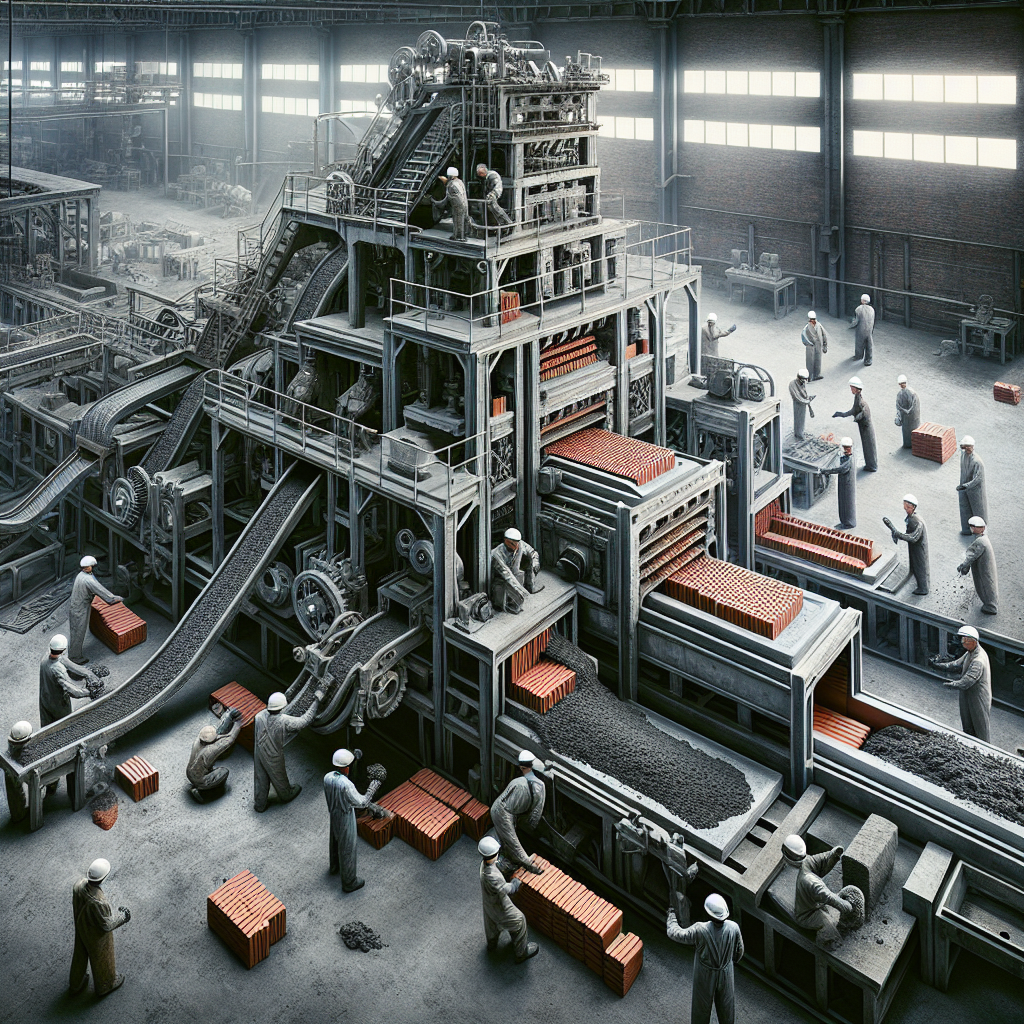The construction industry has seen a revolution with the advent of brick making machines. These machines have not only increased production efficiency but also brought forth environmental implications.
The environmental impact of these machines is a topic of growing concern. It's a complex issue, involving both potential benefits and drawbacks.
This article delves into the environmental footprint of brick making machines. It explores the role of technology in mitigating this impact, and the balance between economic growth and environmental protection in the brick industry.
Join us as we navigate the intricate relationship between brick production and environmental sustainability.
The Evolution of Brick Production and Environmental Concerns
Brick production has evolved significantly over the years. Traditional methods were labor-intensive and had a higher carbon footprint.
The introduction of brick making machines changed the landscape. These machines increased production rates and reduced manual labor.
However, the manufacturing process of bricks typically involves the emission of greenhouse gases. This has raised environmental concerns.
In response, innovations in brick making machine technology aim to reduce this environmental impact. The industry is constantly evolving to address these concerns.
Modern Brick Presses: A Step Towards Sustainability
Modern brick presses have been designed to reduce waste and energy consumption. They are a step towards more sustainable brick production.
These machines can also facilitate the recycling of materials. This is another way they contribute to environmental sustainability.
However, the energy source powering these machines is crucial. If they rely on biomass fuels, they can contribute to deforestation.
Therefore, the choice of energy source is a key factor in assessing the environmental impact of brick presses.
Manual vs. Automated Brick Making: Assessing the Eco-Friendly Quotient
Manual brick making machines can be more eco-friendly. They have lower energy requirements compared to automated machines.
However, they are labor-intensive. This can affect local economies by reducing labor demand.
On the other hand, automated machines increase production efficiency. Yet, they may have a higher carbon footprint.
Therefore, the choice between manual and automated machines involves a trade-off. It depends on the balance between environmental concerns and production efficiency.
The Carbon Footprint of Brick Manufacturing Machines
The manufacturing process of bricks involves the emission of greenhouse gases. This is especially true if the machines rely on biomass fuels.
The energy source powering the machines is crucial for assessing their environmental impact. For instance, machines powered by renewable energy have a lower carbon footprint.
Moreover, the transportation of bricks from factory to construction site also contributes to the environmental footprint. This aspect should not be overlooked when assessing the total carbon footprint.
Innovations in Brick Making for Environmental Efficiency
Innovations in brick making machine technology aim to reduce environmental impact. For instance, some machines incorporate features for dust control and noise reduction.
The development of low-emission kilns for brick firing is part of the industry's response to environmental concerns. These advancements are crucial in mitigating the environmental impact of brick production.
Moreover, proper operation and maintenance of machines can significantly enhance their environmental efficiency. This highlights the importance of training and awareness among machine operators.
The Role of Raw Materials and Recycling in Brick Making
The choice of raw materials in brick production significantly affects the environmental footprint. For instance, using recycled materials can reduce the demand for natural resources.
Advanced brick making machines can facilitate the use of such recycled materials. This is a key step towards sustainable manufacturing.
However, the use of certain raw materials may contribute to deforestation if they rely on biomass fuels. This is a critical aspect to consider in the quest for eco-friendly brick production.
Conclusion: Balancing Economic Growth with Environmental Protection
The brick industry faces the challenge of balancing economic growth with environmental protection. This involves making choices about the type of brick making machines used, the raw materials sourced, and the manufacturing processes implemented.
In the end, the goal is to achieve a sustainable brick production process that minimizes environmental impact while meeting the demands of the construction industry. This requires industry-wide collaboration, innovation, and a commitment to environmental stewardship.










.jpg)





0 Comments